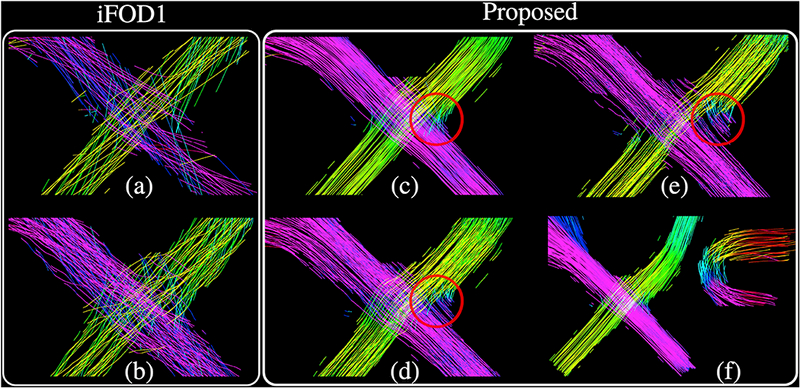Figure 11:

(a-b) show the iFODl results obtained with the same step size used for our approach (Table 2). For (a), an angle constraint of 0.058° is used ( 0.05° was not possible with MRtrix), that is comparable to the rotation of the tangent axis of the Frenet-Serret frame for our approach since we used σΝ = σΒ = 0.05°. For (b), an angle constraint of 0.5° is used, below which iFODl fails to capture all the bundles of the phantom. Notice that for both (a-b) a cut-off value of 0.0075 is used which is higher than the one used in our approach that is 0.004. (c-d) show the results obtained using the proposed approach after recompiling the code in order to write each segment instead of every 100th. (c) shows the results obtained using the parameters in Table 2. (d) shows the result when σΝ = σΒ = 0–5° for which the bundle organization starts to get lost in the circled areas, (e) Our approach is no more successful for increased σΝ =<σB = 2°. (f) shows the case when σΝ =<JB =0°. in which propagations are made mainly due to curvature and torsion variations. Although we obtain the most organized streamlines using this setting, our method fails to make the sharp turns. For (c,d,e,f), all other parameters are kept the same as shown in Table 2.
